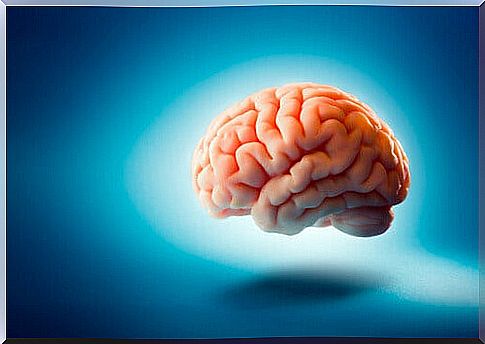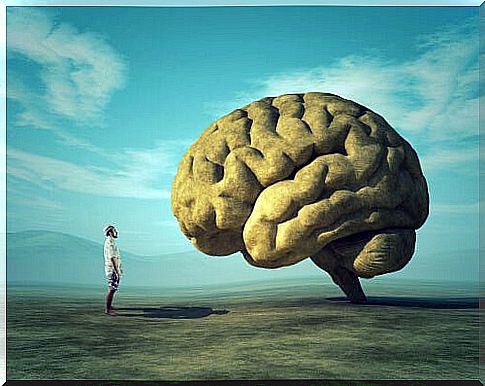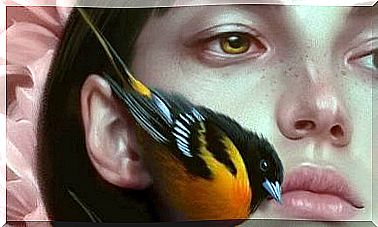6 Curiosities About The Brain That Maybe You Did Not Know

The brain has long been known to be the central “control unit” of our bodies, as well as a repository for memories and emotions. There was even a time when philosophers believed that the brain could house the soul. However, throughout history very interesting things have been discovered … and curious. In this article we are going to see some of those curiosities about the brain. You may already know some of them, but others you may not.
It is well known that the brain is the main organ of the human nervous system, since it controls most of the activities of our body and is capable of processing a large amount of information. In addition, it is the seat of our emotions and cognitive abilities, including long and short-term thinking, memory, and decision-making.
Some curiosities about the brain
From the earliest mention of the brain, recorded in an ancient Egyptian medical treatise known as the Edwin Smith Surgical Papyrus (a document discovered in the 19th century), to the present day, our understanding of the brain has expanded tremendously. However, we are still dealing with many mysteries and curiosities about the brain to discover.

Size
The size of the brain varies greatly, depending largely on age, gender, and overall body mass. However, studies have suggested that the adult male brain weighs, on average, about 1,336 grams, while the adult female brain weighs about 1,198 grams.
In terms of dimensions, the human brain is not the largest. Of all mammals, the sperm whale is known to have the largest brain. Considering that this marine mammal weighs between 35 and 45 tons, the comparison seems somewhat disproportionate.
Yet of all the animals on Earth, human brains have the largest number of neurons – specialized cells that store and transmit information using electrical and chemical signals.
Function
The human brain, together with the spinal cord, makes up the central nervous system. In the brain we can differentiate three main parts:
- The brainstem, which connects the rest of the brain to the spinal cord.
- The cerebellum, which is located at the back of the brain and is deeply involved in regulating movement, motor learning, and maintaining balance.
- The brain, which is the largest part and fills most of the skull. It houses the cerebral cortex (which has a left hemisphere and a right hemisphere separated by a long groove) and other smaller structures, responsible for conscious thinking, decision-making, memory, and the processes of learning, communication, and perception of external and internal stimuli.
Energy consumption
Although the human brain is not a very large organ, it demands a lot of energy. It is curious that, although the human brain only represents 2 percent of our weight, it requires 25 percent of all the energy that the body needs to function.
But why does the human brain require so much fuel to function? Some scientists have hypothesized that while most of this energy is spent in maintaining thought and bodily processes, some of it is likely invested in maintaining the health of brain cells.
But according to other researchers, the brain, apparently inexplicably, consumes a lot of energy during what is known as the “resting state”, when it is not involved in any specific and specific activity.
Explains James Kozloski that the networks with correlation of inactivity appear even under anesthesia, and these areas have very high metabolic rates, increasing the energy budget of the brain although apparently it does nothing.
However, Kozloski’s hypothesis is that a large amount of energy is not expended for no reason, but rather is used to put together a “map” on which information and experiences are accumulated. Map that we turn to, for example, when we make decisions.
Brain part “used”
A myth has been circulating for some time that humans only use 10 percent of our brain capacity. This same myth suggests that if we were able to use the remaining 90%, we could “unlock” incredible abilities.
In reality, we use the majority of our brain almost all the time. Brain scans have shown that we use almost all of our brain all the time, even when we are asleep, although activity patterns and the intensity of that activity may differ depending on what we are doing or what phase of sleep we are in.
Neurologist Krish Sathian explains that even when you are busy with one task and some neurons are engaged in that task, the rest of the brain is busy doing other things. In this way, the solution to a problem can arise after you stop thinking about it or after a night of sleep, and that is because your brain does not stop working on that issue even if you are not focused on it.

Predominant hemisphere
Much is said about the dominance of one hemisphere over the other and its implications for personality. In fact, this is one of the most well-known curiosities about the brain. Left-brain people are supposed to be more mathematically and analytically inclined, while right-brain people are more creative.
But this is not so. While it is true that each of our hemispheres has slightly different functions, people do not actually have a “dominant” side of the brain that governs their personality and abilities.
Instead, research has revealed that people use both hemispheres of the brain to about the same extent. However, what is true is that the left hemisphere of the brain is more concerned with the use of language, while the right hemisphere is more concerned with the complexities of non-verbal communication.
Changes with age
As we age, parts of our brain begin to shrink naturally, losing neurons. The frontal lobe and hippocampus, two key brain regions in the regulation of cognitive processes, which include memory and recovery, begin to shrink when we reach our 60s or 70s.
However, new research suggests that adult brains can also generate new cells. This would increase the chances of our brain plasticity, in addition to our ability to adapt.
The process in which new nerve cells are created in the adult brain is called neurogenesis. Estimates suggest that the average adult human produces 700 new neurons a day in the hippocampus alone.
There are still many curiosities about the brain to discover
Despite the many advances in clinical research and technology , we still have many unanswered questions, many curiosities about the brain to discover. For example, we still don’t understand how complex information is processed in the brain.
Thus, we still cannot explain much of the functioning of our consciousness, what part of our personality is determined by our brain, why we sleep and dream or how we store and access memories, among many other issues. In this way, new discoveries teach us, but they also give us new questions.









